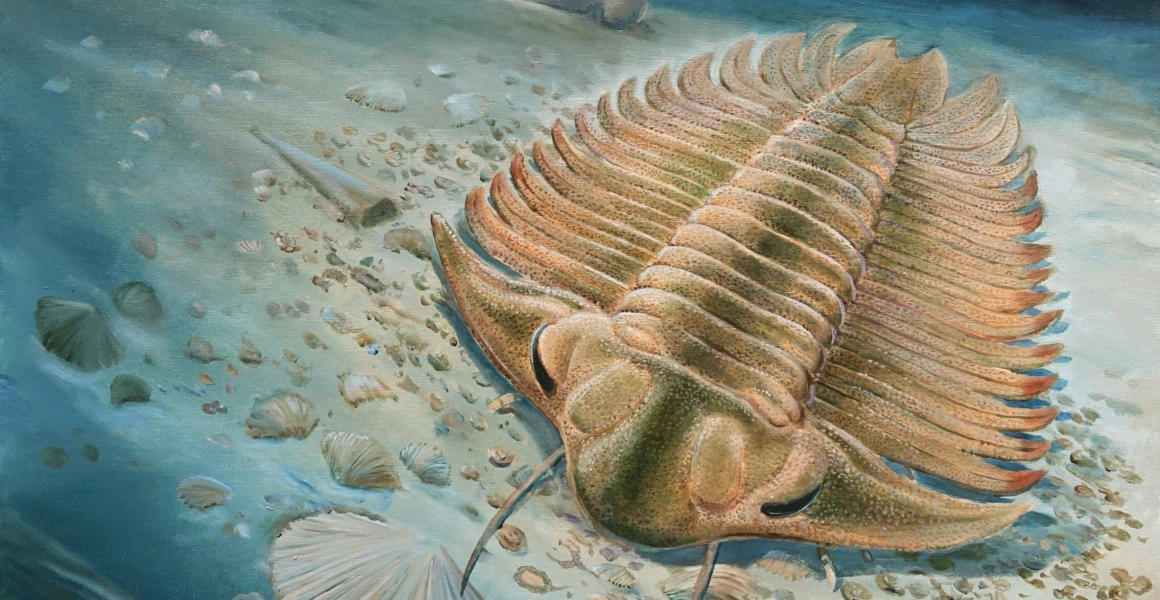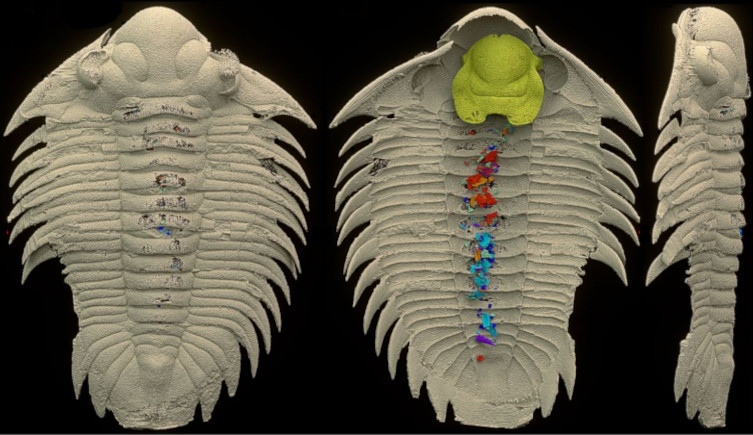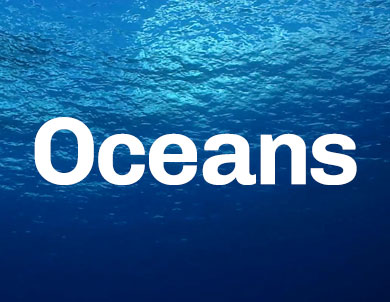For the first time ever, researchers have found a trilobite’s final meal.
While the diet of Bohemolichas incola may not be the same as for all ancient arthropods, it allows questions about their diet to be answered directly for the first time.

The diet of Bohemolichas incola is unlike almost any other known animal ever discovered. Image adapted from © Jiri Svoboda.
For the first time ever, researchers have found a trilobite’s final meal.
While the diet of Bohemolichas incola may not be the same as for all ancient arthropods, it allows questions about their diet to be answered directly for the first time.
The first direct evidence of what trilobites ate has been revealed.
While more than 20,000 species of the marine animals are known to have lived across a period of over 270 million years, their lifestyles have been difficult to determine. It’s thought that some species might have crushed their prey using strong leg segments, but this has been inferred from their anatomy rather than direct evidence.
The discovery of a well-preserved fossil of a 465-million-year-old trilobite, with its gut contents still intact, has offered scientists an insight into its diet. It’s likely that Bohemolichas incola was a scavenger, eating a variety of thin-shelled organisms on the ocean floor.
Dr Richie Howard is the Natural History Museum’s Curator of Fossil Arthropods and was not involved in the study.
‘I’m really surprised by this animal’s diet, as it’s quite a random mixture of different animals,’ Richie says. ‘It seems that rather than being a durophagous (shell-crushing) trilobite it was a generalist that ate almost anything it came across. There’s really very little that is comparable to its diet in any animal, living or extinct.’
‘If this is the kind of feeding behaviour that just one species of trilobite was doing, it will be fascinating to see what the thousands of other species ate.’
The findings of the study were published in the journal Nature.

Horseshoe crabs crush their prey using their legs, with trilobites like Redlichia thought to do the same. Image © Chatchai.wa/Shutterstock.
Trilobites are among the most successful groups of early animals, ranging from the minute Acanthopleurella stipulae, which was just a millimetre long, to species like Hungioides bohemicus which could have been almost a metre in size. From their fossils, palaeontologists have been able to find out a great deal about these animals.
For instance, a lot is known about their vision. While there were many blind species, many other trilobites have eyes made from the mineral calcite, which is much more likely to fossilise than soft tissue. The remains of these structures, and associated nerves, suggest that many species had complex eyes similar to the compound eyes of modern insects.
Their fossils have also revealed information about their mating behaviour. Some species had tridents on their head, which recent research suggests could have been used for sexual combat between males, similar to how stags rut for female deer. If this was the case, then some trilobites might have even been sexually dimorphic, showing physical differences between males and females.
Male claspers were also recently discovered in Olenoides trilobites, which helped males grab onto females to improve the chances of fertilising her eggs.
Despite these advances in some aspects of their behaviour, the study of trilobite feeding hasn’t been as straightforward. While fossilised trilobite poo, or coprolites, are known, they can't be linked to a particular species unlike preserved gut contents.
‘Guts don’t normally fossilise because they’re a soft tissue, so trilobites are generally found with just their exoskeleton preserved,’ Richie says. ‘Occasionally, they are found in trilobites as impressions made in the rock, or flattened remains, but these don’t typically reveal anything that was inside the gut.’
Without direct evidence to work with, the feeding strategies of trilobites have had to be inferred from their appearance.
For instance, Redlichia rex is thought to have eaten ate hard-shelled organisms because it has legs similar to modern horseshoe crabs. As these crustaceans use their legs to crush their prey before eating the insides, it’s thought that Redlichia probably did the same.
Other trilobites, meanwhile, are thought to have had lifestyles ranging from sediment eating to scavenging.
Now that 3D gut contents have been found in a trilobite for the first time, scientists can begin to test some of their assumptions.

To peer inside the fossil, the researchers used a device known as a synchrotron which generates intense X-rays. It revealed a combination of different remains in the gut from small crustaceans known as ostracods, as well as bivalves and an extinct starfish relative known as a stylophoran.
To eat such a wide range of animals, Bohemolichas had a variety of adaptations to help break down its food which began on the outside of its body.
‘Trilobites don’t have feeding appendages such as mandibles or fangs like modern arthropods do,’ Richie explains. ‘Instead, they have a hypostome, which is a hard plate under the stomach of the animal, and spines known as gnathobases on the inside of their legs.’
‘They used these spines to crush food against the hypostome, breaking it up as it was passed up the body before entering the mouth. Today, only horseshoe crabs and some small crustaceans have a similar style of feeding.’
Inside the gut, the picture is not as clear. Living crustaceans such as lobsters and horseshoe crabs have a multi-chambered stomach which includes a ventriculus, a structure which uses internal teeth or swallowed shells to help grind up food.
Scans of the Bohemolichas fossil confirm that it had a multi-chambered stomach and large gut, but couldn’t confirm if it had a ventriculus. However, as characteristics like internal teeth appear to have been present in the ancestor of all arthropods, it’s not out of the question that some trilobites might have kept theirs.
Even if the trilobite did have the ability to grind down its food, it seems like it wasn’t very strong. All the animals found in the gut are either small or have thin shells, with thicker structures remaining mostly intact. Instead, Bohemolichas may have relied on other methods to digest its food.
‘Lichid trilobites like Bohemolichas have pouch-like structures on their head, which are quite different from other groups,’ Richie says. ‘The authors of the paper suggest that these may have contained glands that produced strong digestive enzymes to help them break down their food.’
After the animal died, the researchers believe that these enzymes would have kept functioning for a time. Small burrows within the fossil suggest that scavenging animals started feeding on the body after death but they avoided the gut entirely, even though it would have provided a rich source of food.
It’s suggested this is because it would have been dangerous for them to enter, as the scavengers could have ended up as a postmortem meal. As it happens, feeding on the trilobite seems to have been the last thing these animals ever did.
A lack of exit tracks suggests that soon after the scavengers entered the trilobite, the corpse was rapidly buried, perhaps by a mudslide. This would have led to the animal’s preservation as a fossil until it was discovered more than 460 million years later.

Find out more about why we need to protect oceans and read about the pioneering work of our marine scientists.
Don't miss a thing
Receive email updates about our news, science, exhibitions, events, products, services and fundraising activities. We may occasionally include third-party content from our corporate partners and other museums. We will not share your personal details with these third parties. You must be over the age of 13. Privacy notice.
Follow us on social media